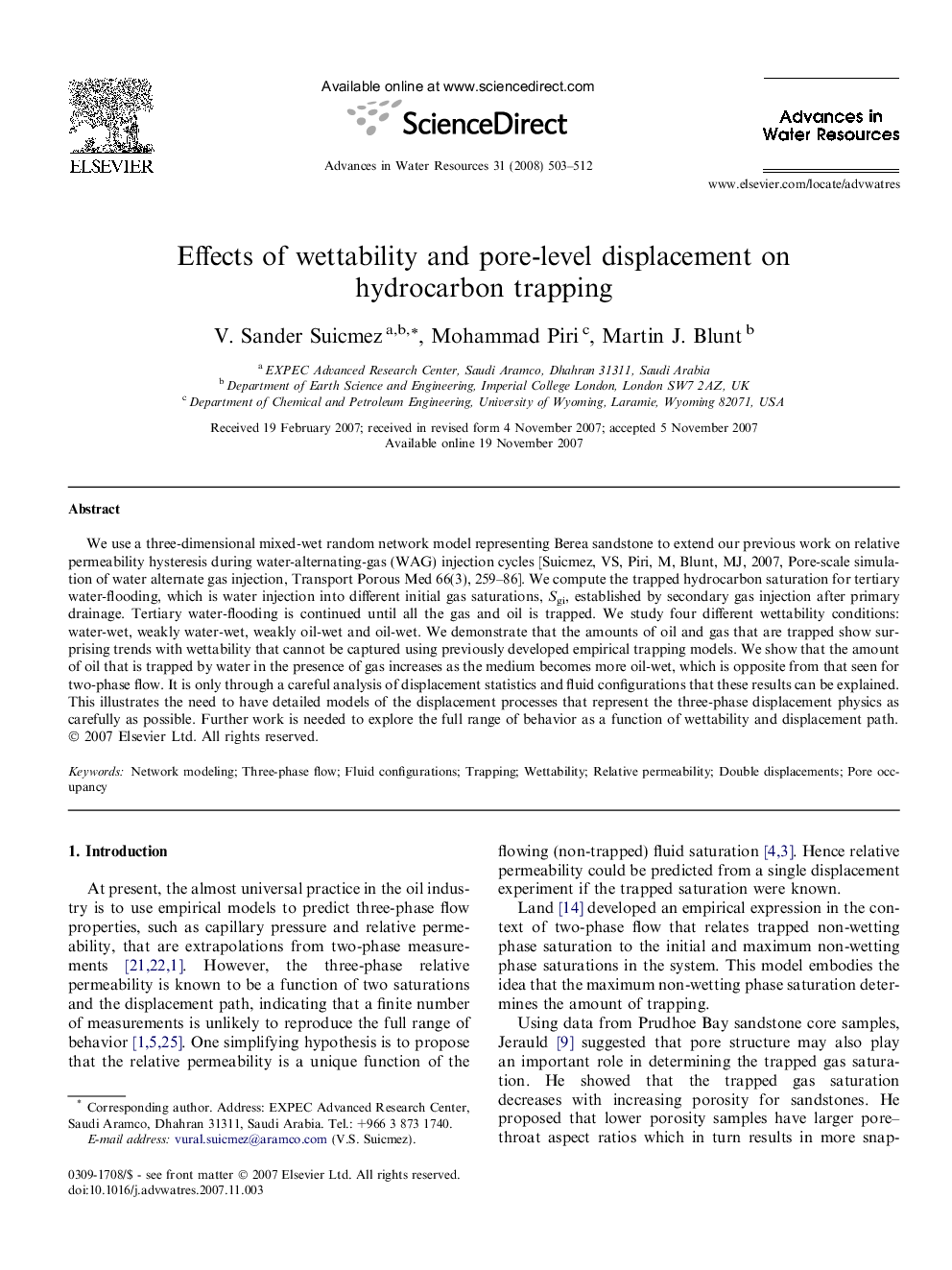| Article ID | Journal | Published Year | Pages | File Type |
|---|---|---|---|---|
| 4526595 | Advances in Water Resources | 2008 | 10 Pages |
We use a three-dimensional mixed-wet random network model representing Berea sandstone to extend our previous work on relative permeability hysteresis during water-alternating-gas (WAG) injection cycles [Suicmez, VS, Piri, M, Blunt, MJ, 2007, Pore-scale simulation of water alternate gas injection, Transport Porous Med 66(3), 259–86]. We compute the trapped hydrocarbon saturation for tertiary water-flooding, which is water injection into different initial gas saturations, Sgi, established by secondary gas injection after primary drainage. Tertiary water-flooding is continued until all the gas and oil is trapped. We study four different wettability conditions: water-wet, weakly water-wet, weakly oil-wet and oil-wet. We demonstrate that the amounts of oil and gas that are trapped show surprising trends with wettability that cannot be captured using previously developed empirical trapping models. We show that the amount of oil that is trapped by water in the presence of gas increases as the medium becomes more oil-wet, which is opposite from that seen for two-phase flow. It is only through a careful analysis of displacement statistics and fluid configurations that these results can be explained. This illustrates the need to have detailed models of the displacement processes that represent the three-phase displacement physics as carefully as possible. Further work is needed to explore the full range of behavior as a function of wettability and displacement path.
